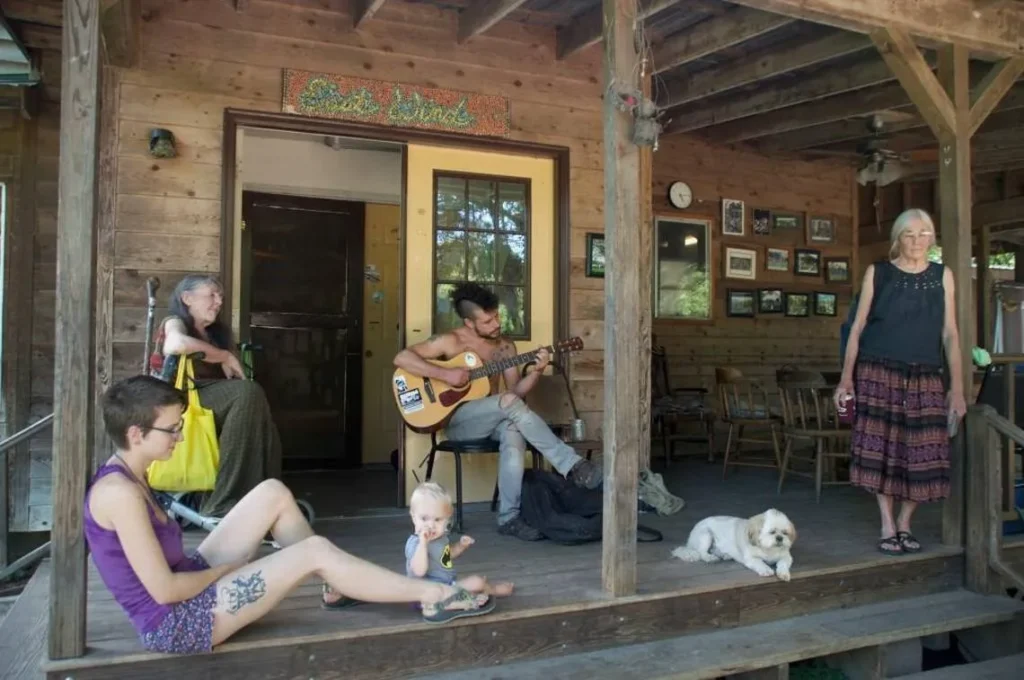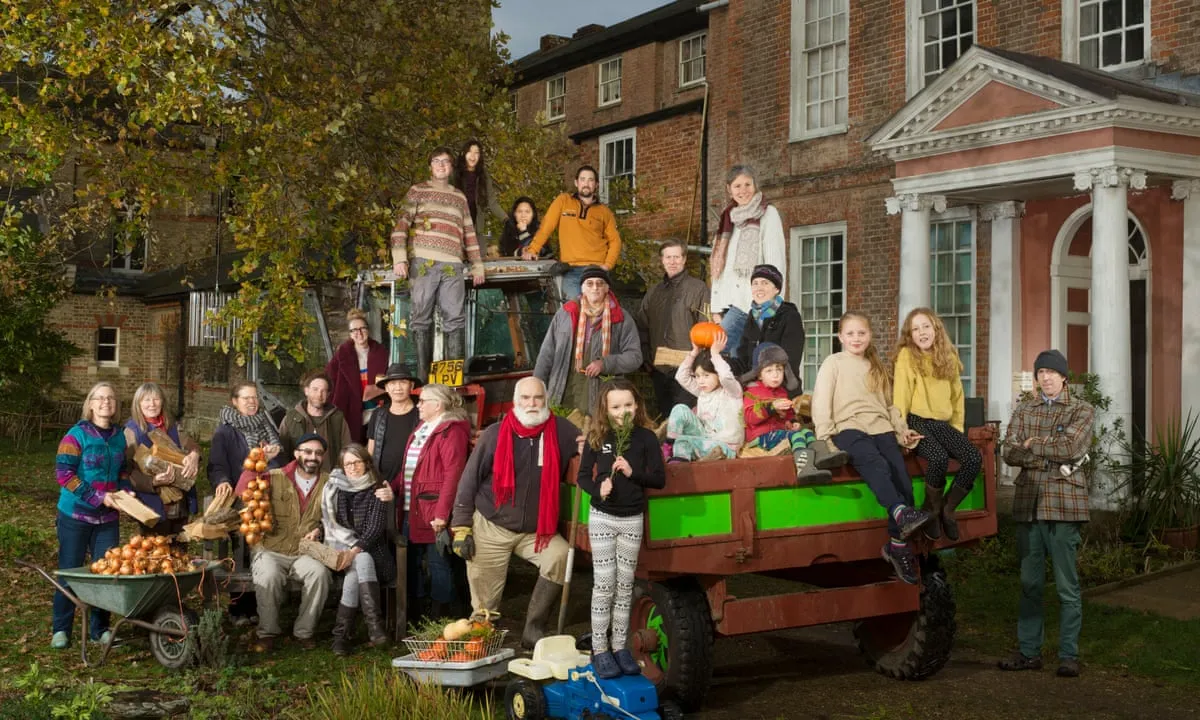In a world marked by rising housing costs, climate anxiety, and a growing sense of disconnection, a modern social experiment is quietly taking hold. Across urban centers, rural retreats, and even suburban neighborhoods, young adults are flocking to communal living spaces, reimagining what it means to live together in harmony.
Dubbed “modern utopias,” these intentional communities aren’t just about splitting rent or reducing expenses. They’re grounded in shared values, sustainable living, collective ownership, and deep human connection—a counterpoint to the hyper-individualism that defined much of the 20th and early 21st century.
As we move deeper into 2025, communal living is no longer a fringe movement—it’s becoming a lifestyle choice embraced by millennials and Gen Z, reshaping housing markets, urban design, and social norms along the way.
The Rise of Intentional Communities
The concept of communal living is not new. From religious communes to 1960s counterculture collectives, humans have long experimented with shared living. But the new wave of intentional communities is distinctly modern—tech-enabled, climate-conscious, and often designed around co-housing models, urban eco-villages, or decentralized “pods.”
These communities can range from 12-person shared homes in cities like Portland or Berlin to 200-person ecovillages like Earthaven in North Carolina or Tamera in Portugal. Some are founded around spiritual or activist missions; others are focused on entrepreneurship, sustainability, or simply offering an antidote to loneliness.
At their core, these new-age utopias are built on four key pillars:
- Shared Resources and Spaces
- Democratic Decision-Making
- Environmental Sustainability
- Emotional and Social Support

Why Young Adults Are Choosing Communal Living
1. Cost of Living Pressures
Skyrocketing rents, stagnant wages, and student loan debt are pushing many young adults to rethink the nuclear household. In major cities, co-housing arrangements offer a way to split costs without sacrificing quality of life.
For example, a three-bedroom apartment in San Francisco may cost $5,000/month, but a communal warehouse space housing 10 people could offer private rooms, shared kitchens, co-working space, and gardens for less than $1,000 per person.
2. Loneliness and Mental Health
Despite being hyper-connected online, many young people report feeling deeply isolated. Communal living provides not only companionship but also a sense of belonging, routine, and mutual care—factors that are proven to reduce depression and anxiety.
In houses with “emotional check-ins,” shared meals, and community-building events, residents are encouraged to support each other beyond basic cohabitation.
3. Climate-Conscious Living
Many communal households strive to live sustainably and minimally. They often rely on solar energy, greywater systems, composting, community gardens, and shared transport. Sharing resources drastically reduces each person’s environmental footprint.
Some communities take this further with off-grid living, permaculture farms, and zero-waste initiatives, making them appealing to climate-aware youth looking for meaningful action.
4. Shared Ideals and Purpose
Modern intentional communities often attract those aligned by philosophy, politics, or lifestyle. Whether it’s anarchist collectives, artist enclaves, tech incubators, or wellness-focused eco-villages, people are choosing to live with like-minded peers who support their values and growth.
Inside the Communal Living Experience
Take, for example, The Embassy Network, a collection of co-living spaces in San Francisco and abroad, home to entrepreneurs, artists, and activists. Residents live together, run workshops, host salons, and even share ownership of the space.
Or look at The Haight Street Commons, a network of over 25 intentional homes in the Bay Area, which focuses on democratic governance, affordable housing, and open-source community development.
In rural settings, communities like Dancing Rabbit Ecovillage (Missouri) and Twin Oaks (Virginia) operate with no private ownership, rotating chores, and income-sharing, offering an immersive communal lifestyle that’s far removed from urban hustle.
Most communities operate under principles such as:
- Consensus decision-making
- Chore rotations and community meals
- Shared finances or time banking
- Non-hierarchical governance
While not utopia in the strict sense, these setups often feel revolutionary to residents used to the stress and alienation of mainstream housing.
Technology Meets Togetherness
In 2025, technology is accelerating the communal living movement. Platforms like Coho, Common, and OpenDoor are streamlining the search and onboarding process, while apps like Cobot or Trellis help manage chore assignments, rent contributions, and communal purchases.
Virtual reality and metaverse-style platforms have also enabled digital intentional communities, where people around the world can co-create spaces and ideas before establishing real-world locations.
Some communities use blockchain for transparent financial governance, especially in decentralized autonomous communities (DACs), where voting rights and budget allocations are managed through smart contracts.
Challenges and Growing Pains
Despite the appeal, communal living is not without its difficulties.
1. Conflict Management
Living with others means interpersonal friction. Disputes over cleaning, guests, finances, or decision-making processes can escalate if not handled with care. Many communities invest in facilitators, restorative justice practices, or nonviolent communication training to manage conflicts.
2. Legal and Zoning Issues
In many cities, zoning laws and landlord regulations can restrict the formation of communal housing, especially if multiple unrelated adults live in a single home. Some intentional communities operate in legal grey areas.
3. Burnout and Sustainability
Running a communal household takes emotional and physical labor. Without clear boundaries and roles, residents can experience burnout. Turnover can also destabilize the group dynamic.
4. Inclusivity
While many communities claim to be open and inclusive, some unintentionally exclude lower-income individuals, people of color, or those with disabilities. Equity audits and inclusive onboarding processes are becoming more common in response.
The Future of Communal Living
As housing costs continue to soar and the desire for deeper social connection grows, communal living is expected to expand in scale and innovation.
Urban planners are starting to take notice. Cities like Copenhagen, Seoul, and Vancouver are exploring co-housing models as part of affordable housing strategies. In the U.S., states like California are loosening zoning rules to accommodate cooperative housing.
Meanwhile, real estate developers are launching commercial co-living spaces, combining the appeal of community with luxury amenities, though critics argue these often commercialize the original ideals.
Young adults, however, remain the driving force, seeking community not just as a housing solution, but as a way of life. The need for connection, sustainability, and a common goal is seen in everything from artists constructing desert villages to digital nomads establishing co-living communities in Bali to city inhabitants redesigning urban dwellings. It is redefining how we live.
Related Blog: “Quiet Luxury” Still Dominates – The Minimalist High-Fashion Revolution
Conclusion: Utopia in Progress
The communal living trend is far from perfect. It’s messy, experimental, and constantly evolving. But for a growing number of young adults in 2025, it represents hope, agency, and belonging in a world that often feels fragmented and isolating.
In choosing to live together—intentionally, sustainably, and cooperatively—this generation is building its own kind of utopia. One house, one village, and one shared meal at a time.
Frequently Asked Questions (FAQs)
Q1: What is communal living?
A: Communal living is a lifestyle where individuals share living spaces, resources, responsibilities, and often values. It includes co-housing, eco-villages, intentional communities, and collective households where members live together intentionally rather than by chance.
Q2: Why are young adults in 2025 increasingly choosing communal living?
A: Young adults are turning to communal living due to high housing costs, climate concerns, mental health struggles, and a desire for connection, community, and shared purpose.
Q3: How does communal living reduce living expenses?
A: By pooling resources, splitting rent, sharing utilities, food, and household goods, communal households drastically reduce per-person expenses compared to traditional solo or nuclear family living arrangements.
Q4: Is communal living only for urban areas?
A: No. Communal living exists in urban co-living homes, rural eco-villages, suburban neighborhoods, and even digital or hybrid communities. Rural models often emphasize sustainability, while urban ones focus on affordability and convenience.




